慈しみ寺について
スリランカ国のケラニア寺院を本山とするテーラワーダ仏教(初期仏教)の寺院です。2012年に開山、2015年に移転し、正式なGandhakuṭi(ガンダクティ)とSīmā(シーマ、戒律堂)を備え、テーラワーダ仏教において伝統的に正式と認められる寺院です。
慈しみ寺(メッタービハーラ)の名は、慈悲(メッター)の寺院(ビハーラ)、慈悲の心(すべての生命の健康と幸せを求める優れた心)の住まい、慈悲の心で生きることを意味しています。
Introduction
The Mettāvihāra (Itsukushimidera) in Onaga Higashi, Hiroshima, is a Theravāda Buddhist temple in Japan. Opening a new era of the Buddhist history of Japan, the first ever Theravāda Buddhist temple in Hiroshima, the Mettāvihāra was opened on Wesak full moon day (May 27), 2012.
On 22nd November 2015, having moved to Onaga Higashi of the East ward of Hiroshima city, with the formal opening of the Gandhakuṭi (Scented Residence for the Buddha) and formally establishing the Sīmā(Chapter House) – the Hall for Buddhist Ecclesiastical Performances, at present, Mettavihāra exists on a beautiful and calm mountain with a serene forest at Onaga Higashi of Hiroshima East ward.
The term Mettāvihāra means the Monastery of Loving Kindness or the Abode (or residence) of Loving Kindness – the quality of heart that wishes wellbeing and happiness of all living things. In a very specific Buddhist spiritual sense, it also means living with (or in) a heart of loving kindness.
The Mettāvihāra has its roots in the historic Kelaniya Rajamahā Vihāraya of Sri Lanka – a land where the Theravāda tradition has its unbroken history of 2563 years.
(by Ven.Deniyaye Paññāloka Buddharakkhita Bhante(Ven.DP))
当山の紹介
慈しみ寺(メッタービハーラ)は、テーラワーダ仏教(初期仏教)の寺院で、日本国広島県広島市東区尾長に位置しています。慈しみ寺は、日本の仏教の歴史に新しい時代を開くことを目指して、広島で最初のテーラワーダ仏教の寺院として、2012年のウエーサーカ祭りの満月の日に開かれました。
2015年11月22日に現在の広島市東区尾長の地へ移転し、山中の静寂な森に、正式に開かれたGandhakuṭi(ガンダクティ(聖なる香りの部屋、ブッダァ釈尊の聖なる居室)と正式な儀式によって建立されたSīmā(シーマ、戒律堂、仏教教団の儀式を執り行う聖堂)を備えることで、テーラワーダ仏教において、伝統的に正式と認められる寺院として建立されました。
名称である慈しみ寺(パーリ語名称メッタービハーラ)とは、慈悲(メッター)の寺院(ビハーラ)、慈悲の心(すべての生命の健康と幸せを求める優れた心)の住まい、さらに仏教徒の心“慈悲の心で生きる”ことを意味しています。
当山の本山は、スリランカ国、現在(西暦2019年)まで2563年間途絶えることなく、仏法僧の尊厳を守る伝統を継承している島国の、the historic Kelaniya Rajamahā Vihāraya(歴史のあるケラニア寺院)です。
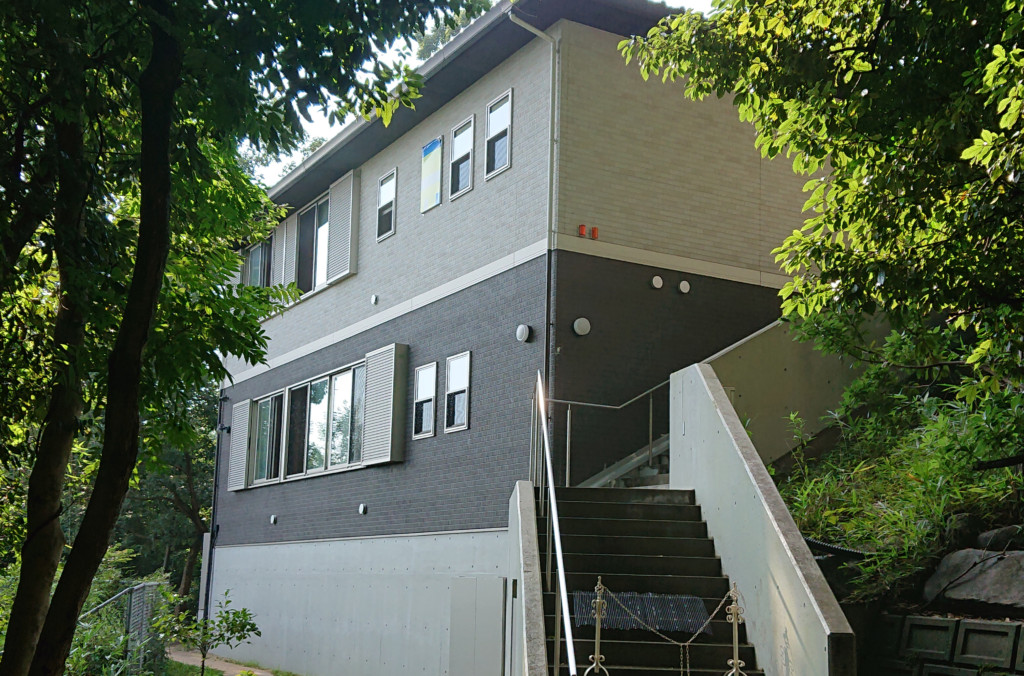
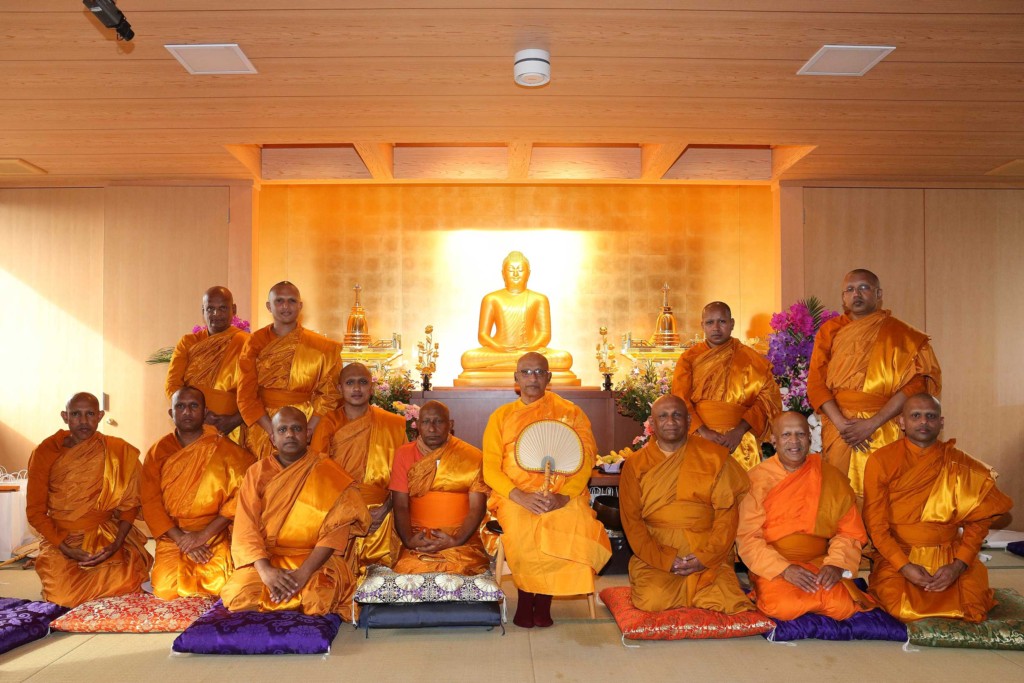
慈しみ寺開山法要 2012.11.12
Kelaniya Rajamahā Vihāraya
The Mettāvihāra is an affiliated temple to the historic Kelaniya Rajamahā Vihāraya in Sri Lanka.
The Kelaniya (Kalyāni [Pali and Skr.]) Rajamahā Vihāra or Historic Kelaniya Temple is one of the oldest sacred Buddhist temples of Sri Lanka
It is in the city of Kelaniya on the banks of Kelaniya river – just seven miles away from Colombo city.
According to the Pāli historical records, i.e., the Dīpavaṃsa and the Mahāvaṃsa etc., the Kelaniya temple derives its sacred historical significance from the third and final visit of the Sākyamuni Buddha (c. 563 – 483 BCE) to Sri Lanka, the island nation of the South of India in the Indian ocean, on the Wesak full moon day of the eighth year (520 BCE) after attaining the complete enlightenment. Thus, Kelaniya Temple was established 2538 years ago in commemoration of this sacred historical event. (by Ven.DP)
本山ケラニア寺院
当山は、スリランカ国のケラニア寺院の正式な末寺です。ケラニア寺院はスリランカ国の最も古い聖なる寺院のひとつです。同院は、コロンボから7マイル離れたケラニア市のケラニア川の畔にあります。パーリ語の歴史書、the Dīpavaṃsa(島史)、the Mahāvaṃsa(大歴史)等によると、ケラニア寺院の歴史は、ブッダァ釈尊(仏陀)(紀元前563-483年)がインド洋の南方の島国であるスリランカを3回目に訪れた、お悟りを開かれた8年後のウェーサーカの満月の日の同国最後の訪問(紀元前520年)という聖なる歴史的意義のある出来事から始まります。ケラニア寺院は、今から2538年前(紀元前520年)に、この聖なる歴史的な訪問を記念し建立されました。
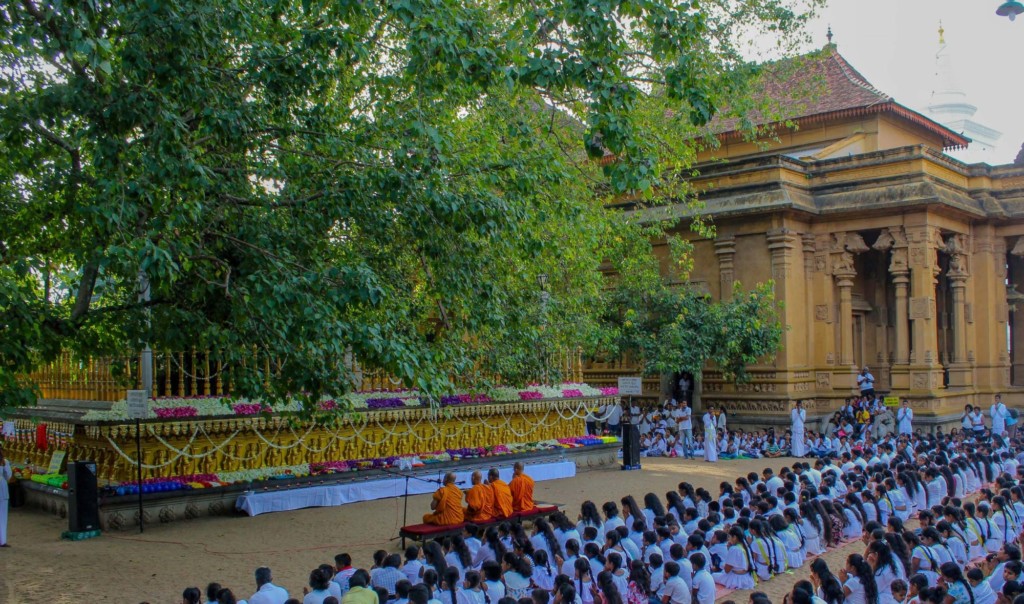
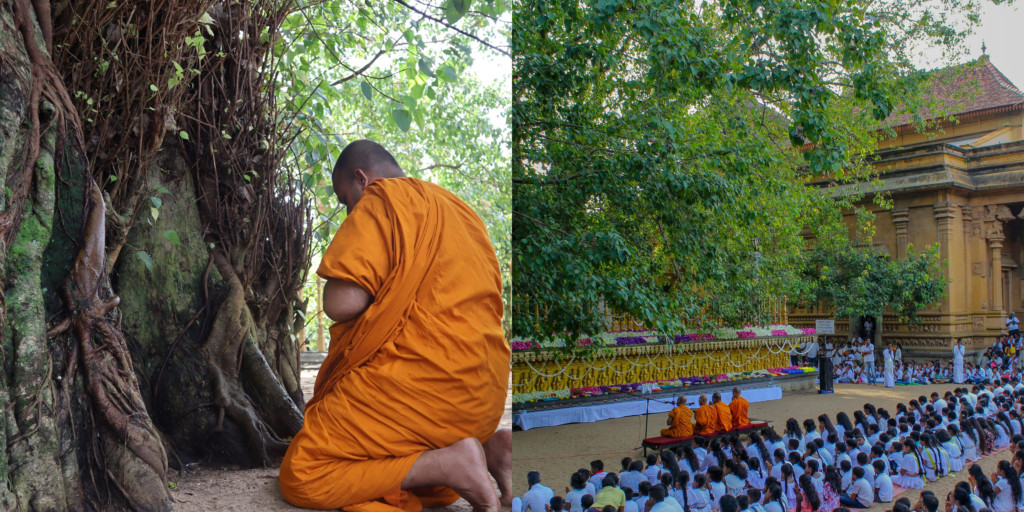
The Sacred Relics
The new temple received sacred relics of the Buddha (dhātu) from the Kelaniya Rajamahā Vihāraya.
The most precious sacred assets of the Mettāvihāra are the sacred relics of the Buddha. At present, the relics are preserved in the Shrine Room of the temple.
Originally, they were available as the secured and esteemed properties of the Kelaniya Rajamahā Vihāraya, Sri Lanka.
The silver casket in the relic chamber contains three genuine sacred relics of the Buddha. Two of them are bone relics. The third is one of the hair relics entrusted to Kelaniya temple for protection by an ancient monastery of the north-eastern Sri Lanka.
All the three relics are historically and archaeologically established to be the real relics of the Buddha.
When the Mettāvihāra was established on 27th May 2012, Most Ven. Kollupitiye Mahinda Sangharakkhita Nayaka Thera, the present chief incumbent of the Kelaniya Rajamahā Vihāraya entrusted these revered relics to the Mettāvihāra to be duly respected and preserved in Japan. (by Ven.DP)
御仏舎利
当山は、ケラニア寺院より、聖なる仏舎利(dhātu)をお預かりしています。
当山の最も聖なる宝物であるブッダァ釈尊の聖遺物(仏舎利)は、聖香室に安置されています。これらの御仏舎利は、スリランカ国において、ケラニア寺院への揺るぎ難い尊敬を集めていました。
聖仏塔の銀のカセットに、3つの正統なる御仏舎利が納められています。2つは御遺骨で、1つはスリランカ国の北東の寺院から保護のためにケラニア寺院へ移管された仏髪の御仏舎利です。これら3つの聖遺物は、歴史的に、考古学的に、ブッダァ釈尊の聖遺物(御仏舎利)であると確証されています。
これらの御仏舎利は、2012年5月27日の慈しみ寺開山に際し、ケラニア寺院総管長レブ コッルピティエ マヒンダ サンガラキッタ ナーヤカ テーロ師により、日本において、伝統に則って正しく尊敬され、大切に保持されるべき御仏舎利として移管されました。
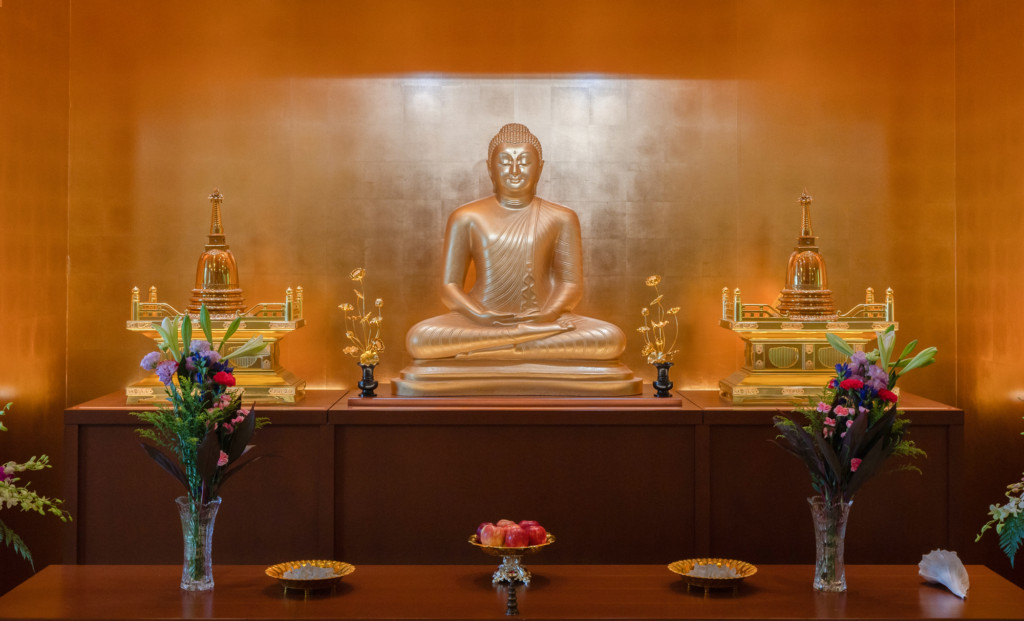
宗旨
当山の宗旨は、パーリ三蔵のブッダァ釈尊(仏陀)の
お教えを教義とし、
「一切の悪行を行わないこと
善行を増し高めること、
心を煩悩より完全に清らかにし
生老病死、輪廻転生から脱する
と説明できます。
紀元前5世紀、北インドのシャーキャ族(釈迦族)のゴータマ シッダッタ王子(Siddhattha Gotama)は、全ての生命の幸せを求めて出家されました。
紀元前528年5月の満月の日、6年間行った苦行から離れ、ブッダガヤーのピッパラ樹(植物名:Ficus religiosa)の元で瞑想し、悟りを開かれ、ブッダァ釈尊(仏陀)となられました。以来、この樹はBodhi-tree(ゴータマ ブッダァの樹)、仏教国では、尊敬を込めてMahā Bodhi(聖菩提樹様)と呼ばれています。
悟りを開かれたブッダァ釈尊の最初の独白は感嘆の偈として知られています。この偈に、仏教(ブッダァ釈尊のお教え)の根本が述べられています。
Paṭhama-Buddhavacanaṃ Udānaṃ
(ブッダァ釈尊最初のお言葉 感嘆の偈)
Aneka jāti saṃsāraṃ – sandhqvissaṃ anibbisaṃ,
gahakārakaṃ gavesanto – dukkhā jāti punappunaṃ.
Gahakāraka diṭṭhosi – puna gehaṃ na kāhasi,
sabbā te phāsukā bhaggā – gahaṃ kūṭaṃ visaṃkhitaṃ,
visaṃkhāra gataṃ cittaṃ – taṇhānaṃ khayaṃ ajjhagā.
数多くの生れ、サンサーラ(saṃsāra輪廻)
の中で、私は見出すことなく歩き回った、
家(自分という存在)の作者を調べながら、
生まれの繰り返しはドゥッカ(dukkha)である。
家を作る者よ、私はあなたを見た、
再び、あなたが家を作ることは無い、
あなたの全ての柱の無い丸屋根の曲がった骨組み(垂木)を私は壊した、
骨組みが寄り集り支え合う頂点部を破砕した、
心が(新たな心を)また作ることはない、
タンハー(taṇhā 渇愛)のない状態を獲得した。
(Dhammapada法句経153,154 訳Ven.Deniyaye Paññāloka Buddharakkhita Bhante)
上段は、ブッダァ釈尊がお話になった当時のパーリ語という言葉です。
ブッダァ釈尊のお言葉は、悟りに到達した僧侶方(阿羅漢)によって暗記で伝承され“パーリ三蔵”という経典にまとめられました。後にスリランカ国で文字で記録され書籍となり、現代になってアルファベット文字に記号をつけて表記され、このアルファベット表記が世界中で利用されています。慈しみ寺では、日本人がわかりやすく、より正しく発音できるように、カタカナ文字に記号をつけて表記する工夫をしています。(慈しみ寺日常読誦経典)
*現存するものの中で、このパーリ三蔵(Tipitaka、ティピタカ)がブッダァ釈尊(仏陀)の教えの根拠です。難解な言葉の羅列ではありませんが、慎重に訳し、理解すべきですので、ブッダァ釈尊のお言葉は、パーリ三蔵とその訳の組み合わせで記載し、引用したパーリ三蔵中の経典名も併記しています。訳者のレベル、読む者自身のレベルと訳語のイメージで正しく理解できないことがありますので、ご不明な点はパーリ三蔵を修学した初期仏教の僧侶にご質問されることをお勧めします。
ブッダァ釈尊(仏陀)ご自身のお言葉をパーリ原典で確認できます
現存するものの中で、このパーリ三蔵(Tipitaka)がブッダァ釈尊の教えの根拠です。慎重に訳し、理解すべきです。訳者のレベル、読む者自身のレベルと訳語のイメージで正しく理解できないことがありますので、ご不明な点はパーリ三蔵を修学した初期仏教の僧侶にご質問されることをお勧めします。
*Buddhavandanā ブッダァウァンダナー ブッダァ釈尊(仏陀)への礼拝
イティ ピ/ ソー バァガウァー
Iti pi so Bhagavā
このように、その世尊は
アラハン
arahaṃ(1)
阿羅漢(一切の心の汚れから遠く離れ、煩悩がない、輪廻の業を破った、語る通りに行う・行う通りに語る(諸悪を内密に為す事がない)、供養を捧げるに相応しい方)
サムマー サムブッドォー
sammā sambuddho(2)
正自覚者(正しく、自ら独力で、完全に覚られた方)
ウィッジャーチャラナ サムパンノー
vijjācaraṇa sampanno(3)
明行具足者(最高の智)と最高に道徳にかなった行動をなさった方)
スガトー
sugato(4)
善逝(ぜんぜい:正確に自らの目的を達成するまで行動をなさった方)
ローカウィドゥー
lokavidū(5)
世間解(せけんげ:欲界・色界・無色界をお分かりになる方)
アヌッタロー プリサダムマサーラティ
無上の調御丈夫(訓練すべき人を指導する無上の能力の方)
anuttaro purisadammasārathi(6)
サッタァー デーウァマヌッサーナン
satthā devamanussānaṃ(7)
天人師(人や神々の先生である方)
ブッドォー
buddho(8)
目覚めた方(自分と世界の物事をありのままに見るようになられた方)
バァガウァー ティ
bhagavā ti.(9)
世尊(すべての福徳を備え、尊敬されている方) と聞いております。
Majjhima nikāya 123 Acchariya abbhuta sutta 中部 123 稀有未曾有経
MN 123 Acchariy’abbhūtadhamma Sutta | Amazing & Astounding Qualities (dhammatalks.org)
MN 123: Incredible and Amazing —Bhikkhu Sujato (suttacentral.net)
参考
Sutta nipāta 3:11 Nālaka sutta
Sn 3:11 Nālaka (dhammatalks.org)
Snp 3.11: The Sages Asita and Nālaka and the Buddha’s advice—Laurence Khantipalo Mills (suttacentral.net)
Majjhima nikāya 19 Dvedhavitakka sutta 中部 19 二種考経
Dvedhavitakka Sutta: Two Sorts of Thinking (accesstoinsight.org)
MN 19: Two Kinds of Thought—Bhikkhu Bodhi (suttacentral.net)
Majjhima nikāya 26 Ariyapariyesana sutta 中部 26 聖求経
Ariyapariyesana Sutta: The Noble Search (accesstoinsight.org)
MN 26: The Noble Search—Bhikkhu Bodhi (suttacentral.net)
Majjhima nikāya 36 Mahā Saccaka sutta 中部 36 大サッチャカ経
Maha-Saccaka Sutta: The Longer Discourse to Saccaka (accesstoinsight.org)
MN 36: The Greater Discourse to Saccaka—Bhikkhu Bodhi (suttacentral.net)
Majjhima nikāya 100 Saṅgārava sutta 中部 100 サンガーラヴァ経
MN 100: With Saṅgārava —Bhikkhu Sujato (suttacentral.net)
Majjhima nikāya 85 Bodhirājakumāra sutta 中部 85 ボーディ王子経
MN 85: With Prince Bodhi —Bhikkhu Sujato (suttacentral.net)
参考
Majjhima nikāya 12 Mahasihanada sutta 中部 12 大獅子吼経
Maha-sihanada Sutta: The Great Discourse on the Lion’s Roar (accesstoinsight.org)
MN 12: The Greater Discourse on the Lion’s Roar—Bhikkhu Bodhi (suttacentral.net)
Aṅguttara nikāya 3.38 増支部 3.38
Sukhamala Sutta: Refinement (accesstoinsight.org)
Majjhima nikāya 36 Mahā Saccaka sutta 中部 36 大サッチャカ経
Maha-Saccaka Sutta: The Longer Discourse to Saccaka (accesstoinsight.org)
MN 36: The Greater Discourse to Saccaka—Bhikkhu Bodhi (suttacentral.net)
Dhammapada 153,154 Paṭhama_Buddhavacanaṃ Udānaṃ 法句経 153,154
紀元前528年5月の満月の日、6年間行った苦行から離れ、ブッダガヤーのピッパラ樹(植物名:Ficus religiosa(Mahā Bodhi 聖菩提樹様))の元で瞑想し、お悟りを開かれたブッダァ釈尊の最初の独白は、感嘆の偈として知られています。この偈に仏教(ブッダァ釈尊のお教え)の根本が述べられています。
*感嘆の偈
Pawhama_Buddhavacanaṃ Udānam
(ブッダァ釈尊最初のお言葉 感嘆の偈)
Aneka jāti saṃsāraṃ – sandhāvissaṃ anibbisaṃ,
gahakārakaṃ gavesanto – dukkhā jāti punappunaṃ.
Gahakāraka diṭṭhosi – puna gehaṃ na kāhasi,
sabbā te phāsukā bhaggā – gaha kūwaṃ visaṃkhitaṃ,
visaṃkhāra gataṃ cittaṃ – taṇhānaṃ khayaṃ ajjhagā.
数多くの生れ、サンサーラの中で、
私は見出すことなく歩き回った、
家(自分という存在)の作者を調べながら、
生まれの繰り返しは、ドゥッカである。
家を作る者よ、私はあなたを見た、
再び、あなたが家を作ることは無い、
あなたの全ての柱の無い丸屋根の曲がった骨組み(垂木)を私は壊した、
骨組みが寄り集り支え合う頂点部を破砕した、
心が(新たな心を)また作ることはない、
タンハー(渇愛)のない状態を獲得した。
(Dhammapada法句経153,154 訳 デニヤーイェ パンニャローカ バンテー)
参考
Saṃyutta nikāya 22:26 相応部 22:26
SN 22.26: Gratification (1)—Bhikkhu Bodhi (suttacentral.net)
Majjhima nikāya 26 Ariyapariyesana sutta 中部 26 聖求経
Ariyapariyesana Sutta: The Noble Search (accesstoinsight.org)
MN 26: The Noble Search—Bhikkhu Bodhi (suttacentral.net)
Saṃyutta nikāya 56:11 相応部 初転法輪
Dhammacakkappavattana Sutta: Setting the Wheel of Dhamma in Motion (accesstoinsight.org)
SN 56.11: Setting in Motion the Wheel of the Dhamma—Bhikkhu Bodhi (suttacentral.net)
Saṃyutta nikāya 22:59 相応部 無我経
Anatta-lakkhana Sutta: The Discourse on the Not-self Characteristic (accesstoinight.org)
Kv 23.3: Of Self-governed Destiny—Shwe Zan Aung, C.A.F. Rhys Davids (suttacentral.net)
Dīgha nikāya 15 Mahānidāna sutta 長部 15 大因縁経
Maha-nidana Sutta: The Great Causes Discourse (accesstoinsight.org)
DN 15: The Great Discourse on Causation—Bhikkhu Bodhi (suttacentral.net)
Dīgha nikāya 16 Mahāpadāna sutta 長部 16 大般涅槃長部
Maha-parinibbana Sutta: Last Days of the Buddha (accesstoinsight.org)
DN 16: The Great Discourse on the Buddha’s Extinguishment —Bhikkhu Sujato (suttacentral.net)
DN 16: The Discourse about the Great Emancipation—Bhikkhu Ānandajoti (suttacentral.net)
*ブッダァ釈尊の御遺言
But it should not, Ananda, be so considered. For that which I have proclaimed and made known as the Dhamma and the Discipline, that shall be your Master when I am gone.
translated by Sister Vajira & Francis Story
(法と律が私の亡き後、そなたたちの師である)
*ブッダァ釈尊の最後のお言葉
Atha kho bhagavā bhikkhū āmantesi – ‘‘handa dāni, bhikkhave, āmantayāmi vo, vayadhammā saṅkhārā appamādena sampādethā’’ti.
And the Blessed One addressed the bhikkhus, saying: “Behold now, bhikkhus, I exhort you: All compounded things are subject to vanish. Strive with earnestness!”
translated by Sister Vajira & Francis Story
(条件づけられ現れたものは消えます。怠らず努めなさい。)
*ブッダァ釈尊御入滅後、ブッダァ釈尊のお言葉を神々の王サッカ(帝釈天)がお唱えされた
Aniccā vata saṅkhārā uppāda vaya dhammino, Uppajjitvā nirujjhanti teasaṃ vūpasamo sukho
Impermanent, indeed, are all processes, arisen they have the nature to decay. After arising they come to cessation, the stilling of them is blissful.
translated by Bhikkhu Ānandajoti
(諸々の現象は無常です、生じては滅します。現象は現れ消えます、これら(現象の生滅)の静止が幸福です。)
Majjhima nikāya 12 Mahasihanada sutta 中部 12 大獅子吼経
Maha-sihanada Sutta: The Great Discourse on the Lion’s Roar (accesstoinsight.org)
MN 12: The Greater Discourse on the Lion’s Roar—Bhikkhu Bodhi (suttacentral.net)
Majjhima nikāya 123 Acchariya abbhuta sutta 中部 123 稀有未曾有経
MN 123 Acchariy’abbhūtadhamma Sutta | Amazing & Astounding Qualities (dhammatalks.org)
MN 123: Incredible and Amazing —Bhikkhu Sujato (suttacentral.net)
Dhammapada 182 法句経 諸仏の出現は稀である
Dhammapada 194 法句経 幸福とは諸仏の出現である
Dhammapada 195,196 法句経 諸仏を供養する功徳は計り知れない
参考
*過去仏についての説示
Dīgha nikāya 14 Mahāpadāna sutta 長部 14 大譬喩経
DN 14: The Great Discourse on the Harvest of Deeds —Bhikkhu Sujato (suttacentral.net)
*三宝(仏法僧)についての説示
Dhammapada 188-192 法句経 三帰依
Sutta nipāta 21 Ratana sutta 宝経(参考Dhammapada 290)
Ratana Sutta: Treasures (accesstoinsight.org)
*礼拝文について
Dīgha nikāya 21 Sakkapañha Sutta 帝釈天問経
DN 21: Sakka’s Questions —Bhikkhu Sujato (suttacentral.net)
Therefore I have taught this. translated by Bhikkhu Bodhi
Dīgha nikāya 2 Sāmaññaphala sutta 長部 2 沙門果経
5. わたしは業で作られ、業を相続し、業から生まれ、業を親戚とし、業に依存している。わたしが(意図して)行うこと(業)は何であれ、善いことであれ悪しきことであれ、わたしが相続する(結果を受け取る)。このことを女性も男性も在家者も出家者も常に観察すべきです。
聖なる生活を過ごしつつ、二度と還ることがない。
5. わたしは業で作られ、業を相続し、業から生まれ、業を親戚とし、業に依存している。わたしが(意図して)行うこと(業)は何であれ、善いことであれ悪しきことであれ、わたしが相続する(結果を受け取る)。このことを女性も男性も在家者も出家者も常に観察すべきです。
聖なる生活を過ごしつつ、二度と還ることがない。
Therefore I have taught this. translated by Bhikkhu Bodhi
Dīgha nikāya 2 Sāmaññaphala sutta 長部 2 沙門果経
Majjhima nikāya 151 Piṇḍapātapārisuddhi sutta 中部 151 托鉢食清浄経
The Purificaqtion of Alms (Sutta Central)
5. わたしは業で作られ、業を相続し、業から生まれ、業を親戚とし、業に依存している。わたしが(意図して)行うこと(業)は何であれ、善いことであれ悪しきことであれ、わたしが相続する(結果を受け取る)。このことを女性も男性も在家者も出家者も常に観察すべきです。
聖なる生活を過ごしつつ、二度と還ることがない。
